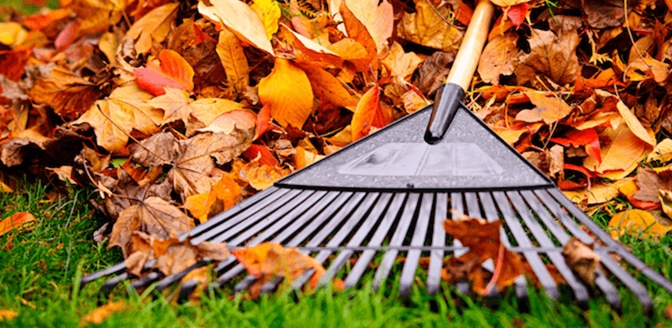Homeowners often have trouble figuring out when is the best time of the year to seed a lawn. Seeding at the wrong time can have negative effects on your grass and result in poor establishment, so it’s important to seed when you’ll have the best chance of success.

Although many people think spring is the best season for plants, it’s not the case with grass. Many are surprised to learn that fall is actually the ideal time to seed a variety of plants, including grass. Cooler weather means seedlings are less affected by heat, yet the soil is still warm enough for optimal root development. Other factors, such as more time to develop and less competition, make Autumn the perfect time of year to seed your lawn. Let’s take a closer look at why.
“Although many people think spring is the best season for plants, it’s not the case with grass.”
1. Ideal Conditions
There are a variety of environmental and climate factors that help nourish a lawn as it grows. Maintaining the appropriate ratio of moisture, soil, and sunlight is a delicate balance, even for those among us with a green thumb. Thankfully, with just a little preparation and practice, you can learn how to seed your lawn so that it’ll thrive. The following are three key conditions to keep in mind when planting seed in the fall:
Soil
Soil preparation is one of the three most important factors that impact successful germination. During autumn, grass seed can germinate most effectively because soil temperatures are still warm (around 60ºF). Another crucial piece of information to think about before seeding is the pH reading of your soil. When the pH of your soil is not balanced, grass struggles to grow. Getting the right grass seed mixture for your specific lawn is also one of the first and most important steps to seeding your lawn, no matter what time of the year you choose to seed it.
Mentioned Products
Moisture
Maintaining proper moisture levels is also essential to the growth of your lawn. One reason fall is the best time of the year to seed your lawn is that your soil is able to better maintain a healthy moisture level. This is one of the main reasons why grass and so many other types of plants benefit from fall seeding.
Sunlight
While soil and moisture are vital, without the right amount of sunlight, it’s very difficult to promote healthy germination. fall provides the optimum amount of light for your lawn, thanks to Earth’s position at that time of year. The less intense sunshine also helps avoid the threat of excessive dryness your lawn and soil face during the late spring and hotter summer months.

2. Extra Development Time
Anyone who loves taking care of the lawn and garden knows that it isn’t an instantly gratifying job. Quality lawns need around two years to fully grow, with longer growing cycles often helping foster remarkably lush greenery. Seeding in fall gives your seedlings over half a year to grow and develop a rich, deep root system, before reaching their full glory in spring. This way, the grass plants are well established before the summer heat returns next year. Make sure to plant your seeds at least 45 days before the first fall frost!
“When you seed in fall, expect to see outstanding results once spring finally rolls around.”
3. More Robust Growth
When you seed in fall, expect to see outstanding results once spring finally rolls around. Thanks to an enhanced growing and development cycle, your grass will be much better positioned to thrive and survive tough conditions. The availability of nutrients and lack of competition while developing help promote grass and root systems that are generally stronger and more resilient than those planted in springtime. In the long term, this can also reduce your lawn care costs and give you a picture-perfect lawn.
4. Easier To Manage
Thanks to stable rainfall, higher retention of moisture in the soil, and less evaporation due to milder temperatures, you actually don’t need to water your autumn-planted grass as often. In fact, seeding during the fall can help you better predict and manage your overall water consumption, which in turn helps to reduce waste and your water bill. On the other hand, if you seed in spring, you’ll need to make sure to water your lawn correctly.
5. Less Competition
Seeds planted during the autumn months enjoy a competitive edge during their growth cycle because your grass has much more space to thrive. Seeding your lawn in the fall will usually require less herbicides and weed removal because weeds start to die out around this time. If you choose to seed your lawn in spring, expect to need some weed control!
The reduced competition from weeds also helps stimulate growth and assists in root development. Additionally, reduced watering, paired with a healthy amount of sunlight and rain during the fall, provides the ideal condition for grass seed growth and development.
Conclusion
Now that you have an understanding of the main benefits of planting your lawn during autumn, it’s time to start earning your green-thumb. To achieve the optimal lawn, make sure you’re following proper seeding practices. Once you finally see the fruits of your labor, you’ll know you made the best decision to seed your lawn in the fall.
By keeping our tips in mind, and with just a little patience, you’ll enjoy a rich, beautiful lawn year after year. Who doesn’t want the greenest and thickest lawn on the block?
